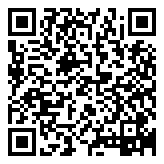
Cleft and Craniofacial Awareness and Prevention
July is Cleft and Craniofacial Awareness and Prevention Month, and it’s a great time to learn more about these conditions. Clefts occur when there is an incomplete fusion of the embryonic structures that form the lip or palate. This can happen on one side (unilateral) or on both sides (bilateral). Clefts can also occur in the middle of the face (median cleft) or involve more than one structure.
Craniofacial anomalies are a group of conditions that can affect any part of the head, face, or neck. They can be present at birth or develop later in life. Craniofacial anomalies can cause problems with appearance, eating, speaking, and breathing.
Clefts and craniofacial anomalies are relatively common, affecting one in every 700 babies born in the United States each year. Clefts are more common in certain ethnic groups, including Asians, Native Americans, and Hispanics. Craniofacial anomalies are also more common in certain syndromes, such as Apert, Crouzon, and Pfeiffer syndromes.
Most clefts can be corrected with surgery, and many craniofacial anomalies can be improved with surgery or other treatments. Early diagnosis and treatment are important for the best possible outcome.
If you or your child has a cleft or craniofacial anomaly, you are not alone. There are many resources available to help you and your family.
The Cleft Palate-Craniofacial Association (CPCA) is a national nonprofit organization that provides information, resources, and support to individuals with clefts and their families. The CPCA also funds research and provides education and training on cleft and craniofacial anomalies.
The American Cleft Palate-Craniofacial Association (ACPA) is another national nonprofit organization that provides information, resources, and support to individuals with clefts and their families. The ACPA also funds research and provides education and training on cleft and craniofacial anomalies.
The National Cleft and Craniofacial teams are a group of healthcare professionals who work together to provide comprehensive care for people with clefts and craniofacial anomalies. These teams are located at select medical centers across the country.
If you or your child has a cleft or craniofacial anomaly, there are many resources available to help you. You don’t have to go through this alone.



Responses